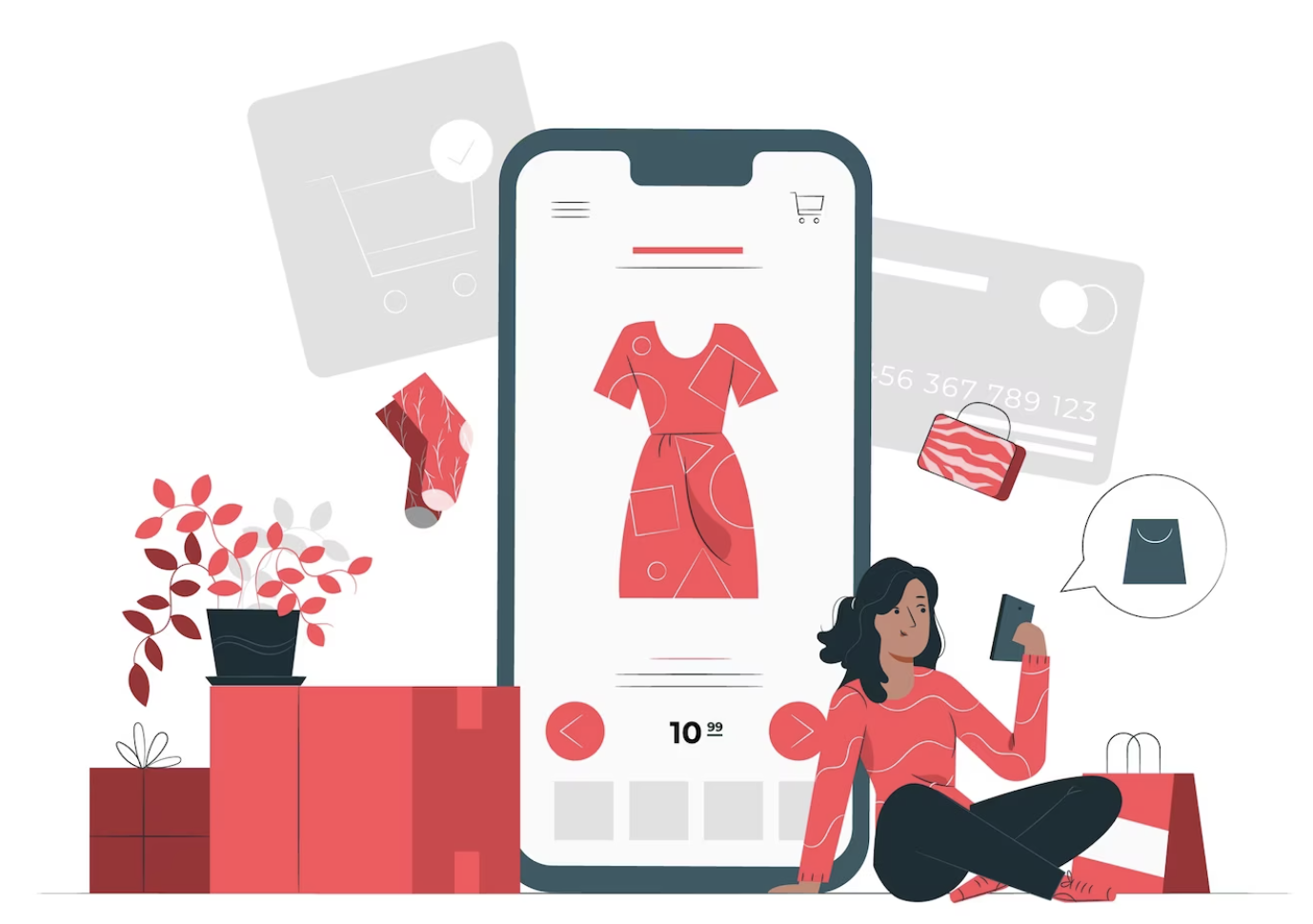Implementing a personalization strategy for your website is essential for your overall business growth, and here's why: it elevates user experience, giving you a significant edge over your competition.
Customizing various aspects of your website to cater to individual preferences, interests, and behaviours is more than just a gesture of goodwill; it's a strategic move. This tailored approach helps enhance the user experience and can increase engagement, improve conversion rates, and foster long-term customer loyalty.
By demonstrating a deep understanding of your audience's needs, you create a personalized experience that sets your brand apart from competitors. Customers who feel you get them will likely enjoy engaging with your content, products, and services. Plus, when you create a personalized user experience, you'll likely see better customer satisfaction, which can lead to positive word-of-mouth and help to build your online reputation.
The key to success? A purposeful personalization strategy that outlines your goals, target audience, data sources, tools, and tactics. With a clear plan in place, you can ensure that your personalization efforts are aligned with your overall business objectives and that you're delivering the right message to the right person at the right time.

How to Create a Personalization Strategy (That Actually Works)
While personalization can be complex and nuanced, it doesn’t have to be. By taking a strategic and deliberate approach, you can craft messaging and experiences that speak directly to your audiences. Whether you're new to personalization or looking to refine your existing strategy, investing time and effort into creating a personalization strategy can pay off in spades.
Set Clear Objectives
Before diving into the personalization process, taking a step back to determine what you hope to achieve is essential. Starting with a clear objective, you can approach personalization strategically and deliberately, leading to more effective and impactful results. Are you looking to increase conversion rates, drive engagement, or improve customer satisfaction? Clearly identifying your goals will also allow you to measure the effectiveness of your personalization efforts and make adjustments as needed.
Collect Data
Once you've set your personalization goals, the next step is to gather data on your audience. This critical step lets you gain insight into your customers' behaviour and preferences. Collect data through various channels, such as website analytics, social media, email marketing, surveys, and customer feedback. Focus on collecting as much data as possible from as many sources as possible to understand your audience comprehensively.
Segment Your Audience
After collecting data, segment your audiences into different groups based on their similarities in interests, behaviour, or demographics. This segmentation process allows you to tailor your messaging and content to each group. For example, if you are a clothing retailer, you should segment your audience based on their shopping history or preferred style.
Develop User Personas
Personas provide a humanized view of your customers' characteristics and behaviours, allowing you to better understand their unique needs, pain points, and motivations. By creating realistic and approachable personas, you can ensure that your personalization efforts remain authentic and genuine. Once you have your segmented audiences, follow these simple steps to create a user persona:
- Develop a profile: Once you've segmented your audience, it's time to develop a profile for a typical customer in each segment. Look for shared interests, behaviours, and demographics to determine what characteristics should be included. This profile should contain age, gender, occupation, location, interests, goals, challenges, and pain points.
- Name the persona: To make each persona more relatable and approachable, give them a name. This helps humanize the persona and makes it easier to refer to them during personalization.
- Add a photo: Adding a photo to each persona can further help humanize them and make them more relatable. You can find a picture that represents the typical customer in that segment, or you can use an avatar to represent the persona.
- Write a bio: Write a brief bio for each persona that summarizes their characteristics, goals, and pain points. This should include information that helps you understand what motivates them and their challenges.
Following these simple steps, you can create user personas that help you better understand your audience and create personalized experiences that resonate with them.
Map User Journeys
A user journey visually represents a customer's various stages when interacting with a company or brand. It illustrates the customer's experience, from initial awareness and consideration to purchase, use, and potentially, long-term loyalty and advocacy. The main goal of a customer journey map is to help businesses understand and improve the overall customer experience by identifying touchpoints, pain points, and opportunities for improvement.
Typically, the customer journey is divided into four stages:
- Need: Every customer starts their journey with a need, such as wanting to purchase a new car or find a solution to a problem.
- Research: In this stage, the customer looks broadly at different options, brands, models, and online reviews. Over days, weeks, or even months, they slowly narrow down their options.
- Decision: The customer selects from a short list of possible brands, factoring in past experiences, reviews, and other online information.
- Customer: After purchasing, the customer enters a new phase where personalized onboarding and customer service experiences become important.
A strong personalization campaign will have personalized content custom-made for each stage of the customer journey, with further tailoring of that content in line with the individual customer’s persona and past behaviour. It's important to note that the four stages can happen rapidly in a B2C environment. Personalization strategies must work in real-time and with the agility to understand and react. By combining context marketing with an omnichannel presence, a brand can construct a customer journey map that delivers personalized experiences at the right time.
Created Customized Experiences
After developing personas and visualizing the user journey, the next step is to use them to customize experiences that speak directly to each segment. Here are some practical ways to use your user personas to create personalized messaging that resonates with your audience:
- Customized email subject lines: Use the information gathered in your user personas to create subject email lines that are personalized and relevant to each persona. Personalizing subject lines can improve open rates and engagement.
- Tailored content on your website: Show each persona products or services most relevant to their interests and needs. This can be achieved through personalized recommendations or creating landing pages specific to each persona.
- Targeted advertising: Create ads that speak directly to each persona's interests or pain points. This can include discounts, exclusive offers, or other incentives.
Monitor Results
Personalization is an ongoing process, and it's important to track the results of your efforts to ensure that your strategy is effective (and remains effective). Regular monitoring can help you identify what’s working and what’s not, allowing you to make adjustments to improve your overall success rate.
Here are a few ways you can monitor your personalization efforts and make data-driven refinements to your strategy:
- Track click-through rates: One way to measure the effectiveness of your personalization efforts is to track click-through rates. Analytics tools allow you to see how many people click on personalized content, ads, or emails. This data can help you identify what messaging or experiences resonate with each persona and what needs improvement.
- Analyze conversion rates: Conversion rates are another metric to track for personalization. By monitoring how many users are taking desired actions, such as making a purchase or signing up for a newsletter, you can measure the success of your personalization efforts. If your conversion rates need to meet your goals, it may be time to adjust your messaging or experiences to align better with the needs of each persona.
- Collect customer feedback: Customer feedback can be invaluable in refining your personalization strategy. Gather feedback from each persona and use it to make necessary adjustments. This can be done through surveys, customer support channels, or social media. Being approachable and transparent in your communications can foster trust and build stronger relationships with your audience.
- Make data-driven adjustments: Based on the metrics and feedback collected, make data-driven adjustments to your personalization strategy. This may involve refining messaging, adjusting the user experience, or adding or removing personas. By continuously iterating and improving your efforts, you can stay ahead of the competition and provide a better user experience for your audience.
Don't Settle for Good Enough: Continuously Iterate Your Strategy
Personalization is a journey, not a destination. It's an ongoing process that demands continuous improvement. Your audience's preferences, needs, and behaviour can shift over time, so it's essential to routinely assess your personalization strategy to guarantee it's still effective. Take advantage of valuable opportunities to connect with your audience by neglecting to refine and evolve your personalization efforts over time.
- Evaluate your personas: Regularly review your personas and make updates as necessary. Ensure that your personas still represent your audience accurately and reflect changes in their behaviour or preferences.
- Explore new personalization techniques: Keep up-to-date with new techniques and tools. Regularly explore new ways to personalize content and experiences to deliver better results for your business and customers.
- Ask for feedback: Encourage customers to provide feedback on their experience with your brand. Use this feedback to inform and improve your personalization strategy continually. Make sure that you're approachable and easy to reach to receive feedback from your customers.
- Continuously iterate: Personalization is an ongoing process. Continuously iterate and improve your personalization strategy to ensure that it effectively provides an exceptional experience for your audience.

Best Practices and Tips for Success
Personalization can be a powerful tool for enhancing your user experience, but it can also be a complex process that requires thoughtful planning and execution. To help you get started on the right foot, here are a few tips for implementing personalization techniques effectively:
- Start Small: Personalization can be a powerful tool in enhancing the user experience and driving conversions. However, starting small and gradually building up your personalization strategy is important to ensure it's effective. This allows you to test and refine your approach before implementing it on a larger scale.
- Focus on Providing Value: Incorporating personalization into your marketing strategy can add significant value for your users, but ensuring that it's not just adding noise or clutter to their experience is crucial. When implementing personalization techniques, ask yourself if it truly adds value for the user. For example, sending a personalized email with recommended products that align with their interests and previous purchases can be valuable. However, bombarding them with irrelevant recommendations can be frustrating and have the opposite effect. By focusing on delivering genuine value to your users, you can build stronger relationships and enhance their overall experience with your brand.
- Be Transparent: Users want to know how their information is being used, and being transparent can also help alleviate concerns about privacy and data security. It's important to clearly communicate your personalization efforts and any data collection processes to your users in a way that is easy to understand. Being transparent can help you establish a trustworthy and responsible brand reputation, which can help attract and retain customers over the long term.
Closing Thoughts and Key Takeaways
Today, personalization is no longer a luxury for brands but a necessity. It's no secret that customers have high expectations when it comes to their online experiences, and personalization is one of the most effective ways to meet those expectations. By connecting with customers on a deeper level, brands can create a unique and memorable experience that sets them apart from the competition.
With the advent of machine learning and consolidated platforms like Sitecore, personalization is becoming more accessible to businesses of all sizes. Delaying the implementation of a personalization strategy could mean falling behind the competition and losing out on valuable customer engagement. Don't just meet your customers' expectations; exceed them with a personalized approach.
Happy strategizing!




